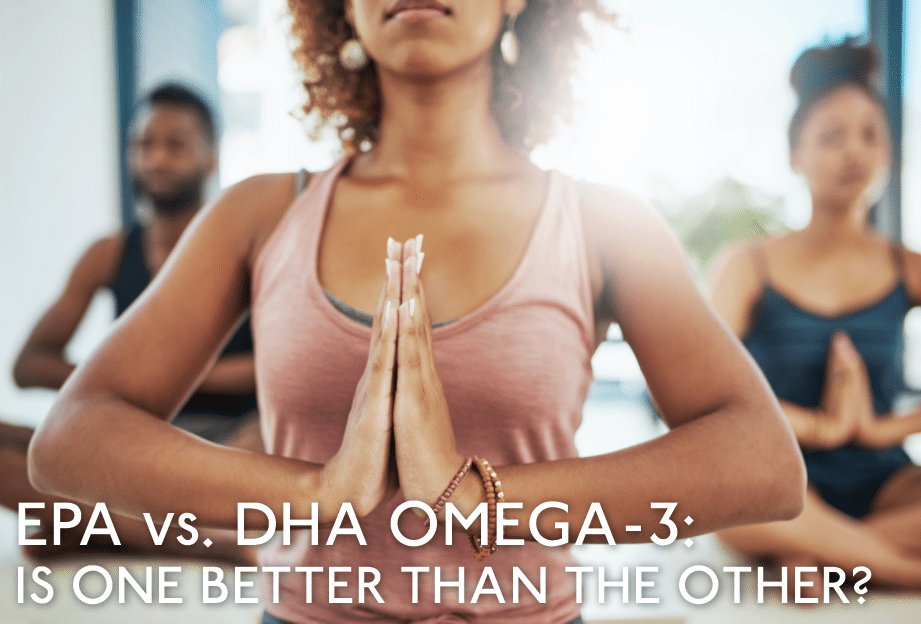Summary:
EPA and DHA are nutrients that provide life-sustaining benefits for human health. From conception to old age, humans need EPA and DHA and since we cannot make these fats in our bodies, we must eat them. EPA and DHA are omega-3 fats and the predominant fats in fish and seafood and purified fish oils.

EPA vs. DHA:
The relative amount of EPA and DHA in fish and seafood differs but EPA and DHA always occur together in fish and seafood. For example, salmon can have more DHA or EPA, depending on the species; pollock has more EPA while sardines usually have about equal amounts of both. The relative amount of EPA and DHA in the human body differs according to diet and supplementation, but EPA and DHA work together in the human body, too.
Since EPA and DHA are biologically active nutrients that occur together and work together, it is difficult to identify distinctly different biological functions. However, here is a summary of what nutrition scientists have learned about EPA and DHA to-date. [1-6]
Healthy Babies:
When babies are in the womb, DHA builds critical brain, eyes, and nerve cells.
Heart Health:
EPA and DHA are instrumental in supporting heart health. Both EPA and DHA reduce triglycerides and support healthy blood pressure levels; they also promote healthy heart rate and normal blood flow. In addition, EPA supports good circulation while DHA helps create a more healthful form of circulating LDL-cholesterol.
Healthy Vision:
DHA is an essential nutrient for eye health and good vision.
Mental Health:
EPA and DHA promote healthy brain function and good mental health. To support healthy mood, research shows that both EPA and DHA with relatively more EPA is helpful.
Among middle-age adults, DHA is associated with clearer mental health. DHA is the source of neuroprotectins, which are thought to support the health and repair of brain cells.
Healthy Aging:
Both EPA and DHA are associated with greater longevity.
Healthy Balance:
EPA competes with omega-6 fats to redirect and lower inflammation. Both EPA and DHA make compounds called resolvins that restore healthy tissue.
Inside all of our cells:
EPA and DHA perform many tasks in cells (e.g., blood, skin, muscle, nerve cells) so that they function properly. Inside these cells, they help manage genetic expression and cellular communication; they are involved in transporting nutrients (e.g., calcium and sodium) and in cell walls (membranes) they help determine what flows in and out.
Conclusion:
When it comes to EPA and DHA, is one better than the other? No. That is akin to asking if your left hand is better than your right hand. Both EPA and DHA make core contributions to human health. Supplementing with more of one than the other may be warranted at different stages of life (see Table for examples) but both EPA and DHA are required for optimal health.
Since many Americans consume far too little EPA and DHA in their diet, the best approach for most people is to ensure adequate intake of both.

Gretchen Vannice, MS, RDN
Nutrition Consultant
For more information contact:
support@wileysfinest.com
References:
[1] 1Bell GA, et al. Am J Epid 2014;179:710-720. [2] Carlson SE. Am J Clin Nutr 2009;89:1523S-1529S. [3] Grosso G, et al. PLOS One 2014;9:e96905. [4] Hoffman DR, et al. PLEFA 2009;81:151-158. [5] Mozaffarian D, Wu JH. J Nutrition 2012;142:614S-625S. [6] Muldoon MF, et al. J Nutrition 2010;140:848-853.Download PDF Version



